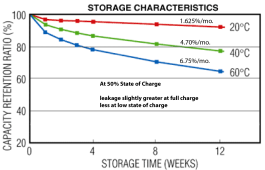I'm looking at purchasing two Chins 24v 100Ah LifePo batteries and noticed that the Ah capacity rating is based on a 5 hour rate (0.2C), compared with the typical 20 hour rate for lead acid. I came across something suggesting that with lithium, there really isn't much difference between C/5 and C/20.
I'm confused. How do I make sure I'm comparing apples to apples? I currently have 380Ah capacity at 2o hour rate with AGM battery bank. I'd like to stay within the 200Ah (20 hour rate) with the LifePo.
What am I missing?
Thanks
Skip
I'm confused. How do I make sure I'm comparing apples to apples? I currently have 380Ah capacity at 2o hour rate with AGM battery bank. I'd like to stay within the 200Ah (20 hour rate) with the LifePo.
What am I missing?
Thanks
Skip



